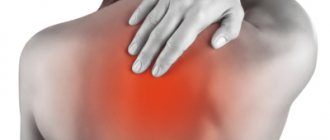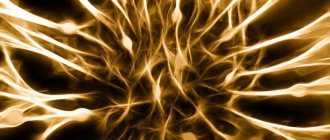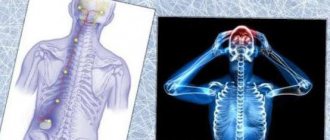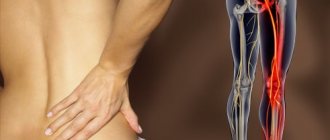In our Center we can offer comprehensive treatment of intercostal neuralgia using the Multigen radiofrequency ablation device. We will answer all your questions by phone. You can also ask a question by filling out the request form below.
Intercostal neuralgia , or thoracalgia , is pain that is felt along the passage of the nerve and is localized in the intercostal space. It may also be accompanied by other uncomfortable sensations - numbness, burning.
Causes of intercostal neuralgia
There are many sources that cause intercostal neuralgia. This can be external (poisoning with heavy metals, medications) and internal intoxication. The latter are usually associated with diseases in neighboring organs and tissues (pleurisy, spinal diseases).
Pain in the intercostal space is often caused by diffuse pathologies of the nervous system - hormonal spondylopathy, polyradiculoneuritis, multiple sclerosis, as well as infections such as tuberculosis and herpes zoster.
Often this symptom occurs due to spinal pathology, injuries, allergies .
Metabolic disorders and hypoxia of nervous tissue are promoted by anemia, diabetes mellitus, alcohol intoxication, hepatitis, malabsorption and decreased concentrations of B vitamins, atherosclerosis and hypertension.
As a rule, intercostal neuralgia, the symptoms of which everyone should know, develops under the influence of several factors. It is characteristic that it is never diagnosed in children. We can say that this is a disease of people mainly in the middle and older age categories.
Serious life-threatening symptoms
Severe, debilitating pain can make breathing very difficult. Pain can also occur for life-threatening reasons, such as a heart attack. You should seek help if any of these symptoms appear:
- Chest pain that may spread to the jaw, shoulder, left arm, or back.
- Pressure in the chest, cramps and a feeling of rupture.
- Cough with yellow-green mucus
- Cardiopalmus.
- Breathing problems, such as severe shortness of breath and inability to breathe deeply.
- Severe abdominal pain.
- Severe chest pain when breathing and coughing.
- Confusion, dizziness, fainting.
How to treat intercostal neuralgia?
Since this symptom develops against the background of a large number of different diseases, the doctor must accurately identify the cause of its occurrence and prescribe adequate treatment.
Intercostal neuralgia sometimes simulates an attack of heart pain, but discomfort appears predominantly in the left half of the chest; moreover, it does not depend on breathing or movement and does not occur with external palpation.
The most advanced diagnostics are now possible using the most modern research methods, such as computed tomography and magnetic resonance imaging. These techniques make it possible to detect neoplasms, signs of changes in the brain and spinal cord, and damage to internal organs with high accuracy.
During the acute period, the patient should strictly observe a rest regime. It is necessary to limit sudden movements, physical activity, and body turns. Sitting should be avoided. You need to lie on a flat and level surface. You can apply sand in bags, pepper patch, or a heating pad, that is, dry heat, to the painful area. To enhance the thermal effect, you can tie yourself with a scarf made of natural wool.
Diagnostics
The diagnosis of intercostal neuralgia is made by a doctor based on the patient’s complaints, medical history, after a thorough examination and clarification of the etiology of chest pain. The disease is characterized by possible redness or blanching of the skin in the affected nerve area, and upon palpation there is pain along the affected nerve. With this disease, a mandatory examination of the chest organs is necessary in order to exclude pneumonia, pleurisy, and pneumothorax. An additional examination of the heart and an ECG is necessary if the pain is localized on the left side of the body, to exclude a number of severe heart diseases.
In order to exclude pathologies of the spine, the doctor may prescribe radiography, MRI, CT and myelography, which determines the condition of the nerve roots, and ultrasound.
Get a free consultation by phone
Tablets for intercostal neuralgia
Of the medications that alleviate the course of this disease, the first place goes to analgesics (analgin, sedalgin) and non-steroidal drugs (ibuprofen, piroxicam, indomethacin), which have anti-inflammatory properties. They should be taken regularly for pain prevention purposes, without waiting for a new attack to occur.
Drugs that belong to the group of muscle relaxants (tizanidine or baclofen) help not only eliminate pain, but also relieve muscle spasms in the area of injury. Medicines in this group must be used with caution, especially for people driving and associated with work involving a high concentration of attention.
To relieve nervous tension, you can take sedatives. Be sure to carry out vitamin therapy . Complexes containing daily dosages of B .
Intercostal neuralgia with unbearable pain can be successfully relieved with lidocaine or novocaine blockades . These procedures are usually performed in specialized centers. But in particularly severe cases of the disease, the prescription of steroids, usually prednisone, is indicated.
A good effect is achieved when physiotherapeutic methods . They include UV irradiation of the corresponding paravertebral region, electrophoresis with lidocaine, especially in the acute period. When the phase transitions from acute to subacute, darsonvalization, microwave therapy, and phonophoresis are prescribed. Reflexology is widely used for this pathology.
Clinical manifestations
With intercostal neuralgia, pain can be concentrated in the right or left side of the chest. The pain may have a girdling nature and become stronger with a deep breath, coughing or turning the body. There are frequent cases in which pain symptoms lead to overstrain of the shoulder, shoulder blade or pectoral muscles. This is the reason for the increase in pain when trying to bend forward or move the arm.
Painful symptoms of intercostal neuralgia are also often accompanied by:
- projections of pain in the lumbar and dorsal region, as well as in the heart area;
- a burning sensation or numbness along the nerve trunk and its branches.
Pain can be felt in the area of the xiphoid process and be similar to pain with gastritis - such clinical manifestations are characteristic of pathologies of the nerves emerging from the 5th, 6th and 7th vertebrae. If they cover the nerves of the 10th, 11th, 12th vertebrae, the pain symptoms resemble those observed with appendicitis.
Cases in which the upper parts of the sternum are affected are characterized by the sensation of a foreign body behind the sternum and in the pharynx, which can cause swallowing problems.
At CELT you can get advice from a specialist algologist.
Make an appointment
Treatment at the Energy of Health clinic
Doctors at the Energy of Health clinic will always come to the aid of patients with intercostal neuralgia. We offer each client:
- a full examination with consultations with specialists for an accurate diagnosis;
- individual selection of treatment regimen;
- services of a qualified chiropractor;
- own exercise therapy room for the most effective and safe exercises;
- modern methods of physiotherapy;
- massotherapy;
- drug blockades for severe pain syndrome.
Regular observation by a neurologist after the acute period of the disease has subsided will help prevent recurrent attacks.
Forms
There is no special classification of the disease. There are several separate forms depending on the mechanism of occurrence:
- radicular: associated with irritation of the spinal cord roots at the point of their exit from the spinal column;
- reflex: associated with overstrain of muscle fibers at the site of the nerve passage.
There is also a classification of neuralgia depending on:
- causes: primary (associated with damage or inflammation of the nerve itself) and secondary (due to other diseases);
- localization: unilateral and bilateral;
- course of the disease: acute and chronic.
Complications
Complications of intercostal neuralgia occur quite rarely, however, in severe cases, without appropriate treatment, the patient may encounter the following problems:
- severe spasm of the respiratory muscles, limiting inhalation and exhalation;
- inability to get out of bed due to significant increase in pain;
- excessive pain syndrome that is not relieved by conventional analgesics and NSAIDs;
- heart rhythm disturbances due to muscle spasms and nerve pathology;
- decreased leg mobility.
In addition, complications can be caused by attempts to be treated outside the clinic. Abscesses and cellulitis after acupuncture, paralysis and decreased sensitivity after manual therapy are not a complete list of problems. That is why you should not treat intercostal neuralgia either independently or with the help of dubious specialists.
Methods for treating intercostal neuralgia
Drug therapy. There is a wide variety of drugs to eliminate pinched nerves: painkillers, anti-inflammatory drugs, those that increase the body’s defenses, injections, blockades. All drugs have a long list of side effects, so before using them you need to consult a specialist. Any medicine is selected depending on the severity, tendency to allergies, and the characteristics of the course of the disease.
- Anticonvulsants inhibit the conduction of pain impulses.
- Tricyclic antidepressants relieve tension in chronic pain syndromes.
- Venotonics and diuretics relieve swelling.
- Corticosteroid drugs are used in cases of severe inflammation.
- Vitamins B1, B6 and B1 accelerate the restoration of the nerve sheath, reduce inflammation and pain.
Compresses. They can be either hot or cold. They are used to reduce inflammation and also to reduce pain. This is only a temporary measure and has no therapeutic effect.
Other methods: gymnastics, shock wave therapy, massage, physiotherapy - alleviate your condition, ensuring complete recovery. And these procedures do not harm the body.
Physiotherapy and exercise therapy. Intercostal neuralgia is often caused by poor posture. The goal of physical therapy is to relieve the back muscles and open the chest. Therapeutic exercises should be performed 3-4 times a day.
Physiotherapy includes acupuncture, osteopathy, manual therapy, massage with warming creams and ointments, and kinesiotaping. They relax the fascia of the chest and back. Heat helps to temporarily relax muscles, relieve swelling, inflammation and acute pain.
Massotherapy. It should be done while sitting. When performing the procedure, the intercostal spaces are rubbed and stroked with your fingertips. In addition to this, they knead and rub the back muscles with both hands. During acupressure massage, use your fingers to press on active points associated with one or another affected organ. Acupressure can stimulate defenses and relieve pain.
Prevention
Prevention is a simple and affordable way to reduce the risk of intercostal neuralgia in adulthood. It includes moderate physical activity, selected in accordance with the general well-being of the patients. Loads should be dosed and regular, preferably daily.
It is important to monitor your posture. If you are predisposed to disorders, perform a set of exercises aimed at strengthening the muscle corset. To maintain immunity, you should avoid excessive stress and stress, eat well, and avoid hypothermia.








